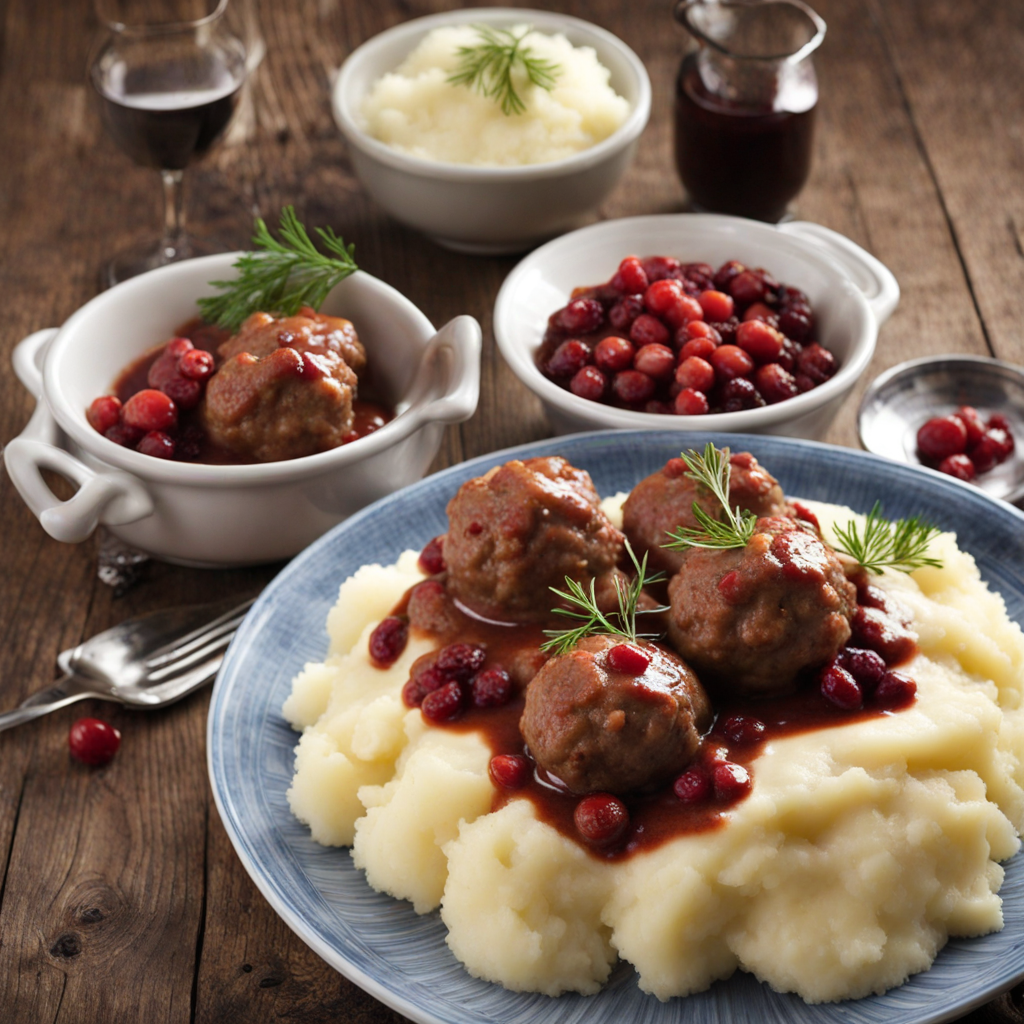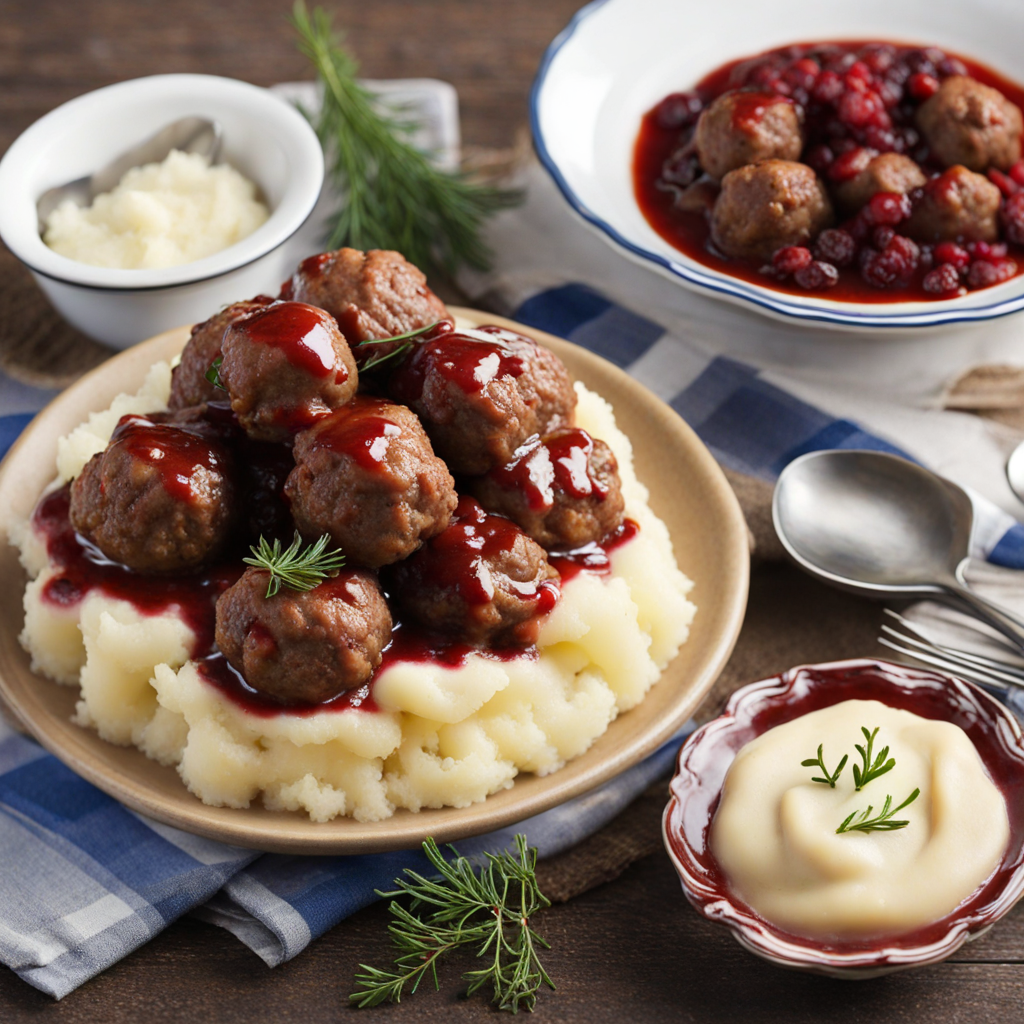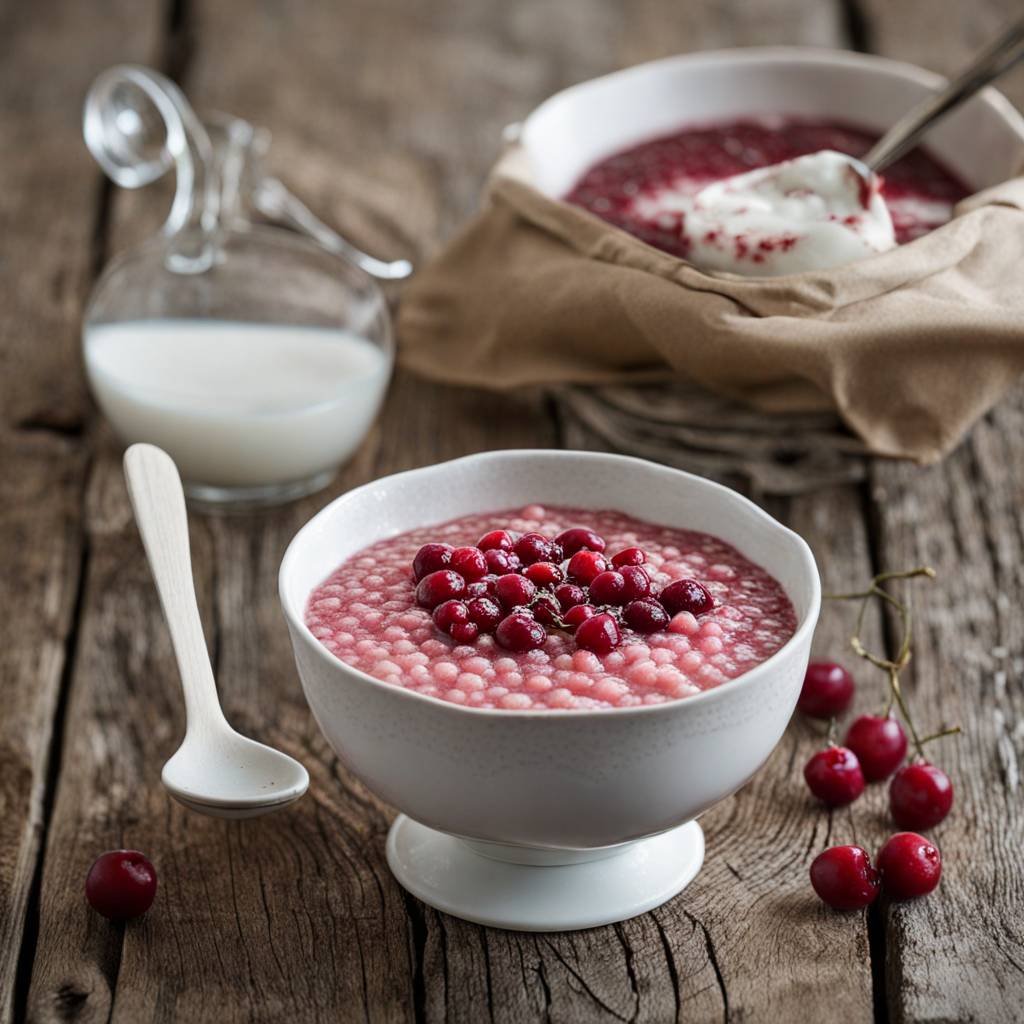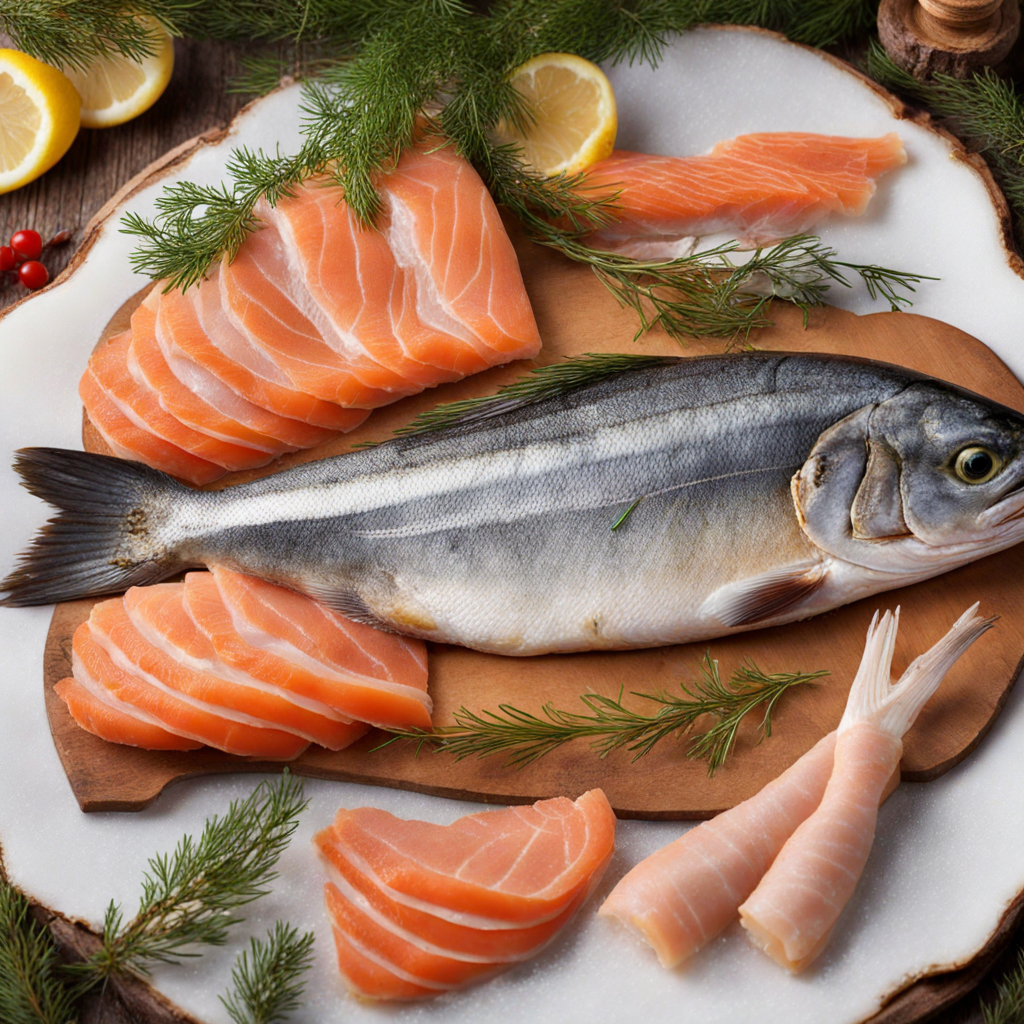Finnish Meatballs
Finnish Meatballs, or "lihapullat" as they are known in Finland, are a delightful twist on the classic meatball, embodying the heartiness of Scandinavian cuisine. These tender, savory morsels are typically made from a blend of ground beef, pork, or even a mix of meats, seasoned with onion, salt, and pepper. The addition of breadcrumbs soaked in milk gives them a soft, moist texture that melts in your mouth. Each meatball is usually rolled into a small, uniform size, ensuring a delightful bite every time. The flavor profile of Finnish Meatballs is both comforting and subtle, with a hint of nutmeg or allspice sometimes added to enhance the taste. They are often served with a rich, creamy sauce made from pan drippings, which elevates their savory essence. Accompanied by traditional Finnish sides like mashed potatoes, lingonberry sauce, or pickled cucumbers, every bite becomes a harmonious blend of flavors. The tartness of the lingonberries beautifully contrasts the richness of the meatballs, creating a balance that is both satisfying and refreshing. Finnish Meatballs are not just a dish; they represent the warmth and hospitality of Finnish culture. Often enjoyed during family gatherings or festive occasions, these meatballs evoke a sense of nostalgia, bringing people together around the dinner table. The experience of tasting Finnish Meatballs is not only about the food itself but also about the stories and traditions that accompany it, making it a truly unique culinary adventure worth exploring.
How It Became This Dish
The History of Lihapullat: Finland's Beloved Meatballs Lihapullat, or Finnish meatballs, represent more than just a beloved dish in Finland; they embody the essence of Finnish comfort food and the cultural tapestry of the nation. Their history is intertwined with the evolution of Finnish cuisine, reflecting the country's agricultural practices, social changes, and culinary influences from neighboring regions. #### Origins The roots of lihapullat can be traced back to the broader European tradition of meatballs, which have existed in various forms across the continent for centuries. The concept of minced meat shaped into small rounds is not unique to Finland; it can be found in numerous cultures, from Italian polpette to Swedish köttbullar. However, Finnish lihapullat have developed their own distinct identity, shaped by local ingredients and culinary traditions. Historically, Finland's harsh climate and long winters necessitated the preservation of food. Meat, particularly from reindeer, pork, and beef, was often minced and mixed with bread or potatoes to stretch it further. This practice not only maximized the use of resources but also created a hearty meal suited to the needs of Finnish families. Lihapullat emerged as a practical solution, providing sustenance and warmth during the long, cold months. #### Cultural Significance Lihapullat holds a special place in Finnish culture, symbolizing home cooking and familial bonds. They are often associated with family gatherings, celebrations, and festive occasions. Traditionally served with mashed potatoes, lingonberry sauce, and creamy gravy, they evoke memories of home-cooked meals and the comfort of shared experiences around the dinner table. The dish's significance is further highlighted in Finnish literature and folklore, where food plays a central role in storytelling. Lihapullat often appear in tales that emphasize community, hospitality, and the importance of gathering together. They are a symbol of warmth and care, reflecting the Finnish ethos of togetherness and simplicity. During the post-World War II era, as Finland underwent social and economic changes, lihapullat became a staple in households across the country. The period saw urban migration and the rise of convenience foods, yet the tradition of making meatballs persisted. Many Finnish families passed down their recipes through generations, ensuring that the dish remained a cherished part of their culinary heritage. #### Development Over Time Throughout the decades, the preparation and presentation of lihapullat have evolved, adapting to modern tastes while retaining traditional elements. In the early days, ingredients were simple, relying on what was readily available. Ground meat mixed with breadcrumbs, onions, and spices formed the core of the recipe, with variations depending on regional preferences. In the 20th century, as Finnish cuisine began to embrace global influences, so too did lihapullat. The addition of ingredients such as garlic, mustard, and even cream to the meat mixture became common, reflecting a broader trend toward innovation in home cooking. The dish also became more prominent in Finnish restaurants, where chefs experimented with flavors and presentation, elevating lihapullat to new culinary heights. The late 20th and early 21st centuries marked a significant shift towards health-conscious eating. As the world became more aware of nutrition and dietary choices, lihapullat saw adaptations to cater to these changing preferences. Recipes now often include leaner meats or alternative proteins, such as turkey or plant-based options, while still paying homage to traditional flavors. This evolution demonstrates the resilience of Finnish cuisine, allowing it to stay relevant in an increasingly diverse culinary landscape. #### Lihapullat Today Today, lihapullat are a staple of Finnish cuisine, enjoyed across the nation and beyond. They are commonly served in homes, schools, and restaurants, celebrated for their comforting qualities and versatility. The dish has also found its way into Finnish holidays and celebrations, often appearing at Christmas dinners and family feasts. The popularity of lihapullat has crossed international borders, with Finnish expatriates and food enthusiasts around the world embracing the dish. Finnish meatballs have gained recognition in global culinary circles, and variations of the recipe can be found in countries with a significant Finnish diaspora. This globalization has resulted in cross-cultural adaptations, with ingredients and flavors from other cuisines being integrated into traditional Finnish recipes. As food culture continues to evolve, lihapullat remains a symbol of Finnish identity and heritage. The dish serves as a canvas for creativity, allowing cooks to experiment with flavors while staying true to its roots. Social media has played a pivotal role in popularizing Finnish cuisine, with many food bloggers and influencers showcasing their unique takes on lihapullat, helping to keep the tradition alive and relevant. #### Conclusion In conclusion, lihapullat is more than just a dish; it's a reflection of Finnish culture, history, and the enduring traditions that bind families and communities together. From its humble origins to its status as a beloved comfort food, lihapullat has adapted to the changing times while preserving its essence. As Finland continues to embrace modernity, this cherished meatball dish will undoubtedly remain a staple, celebrating the rich culinary heritage of the nation and the warmth of home-cooked meals. Whether enjoyed in a cozy kitchen in Finland or at a dinner table halfway across the world, lihapullat will always evoke the spirit of togetherness and the joys of shared culinary experiences.
You may like
Discover local flavors from Finland






